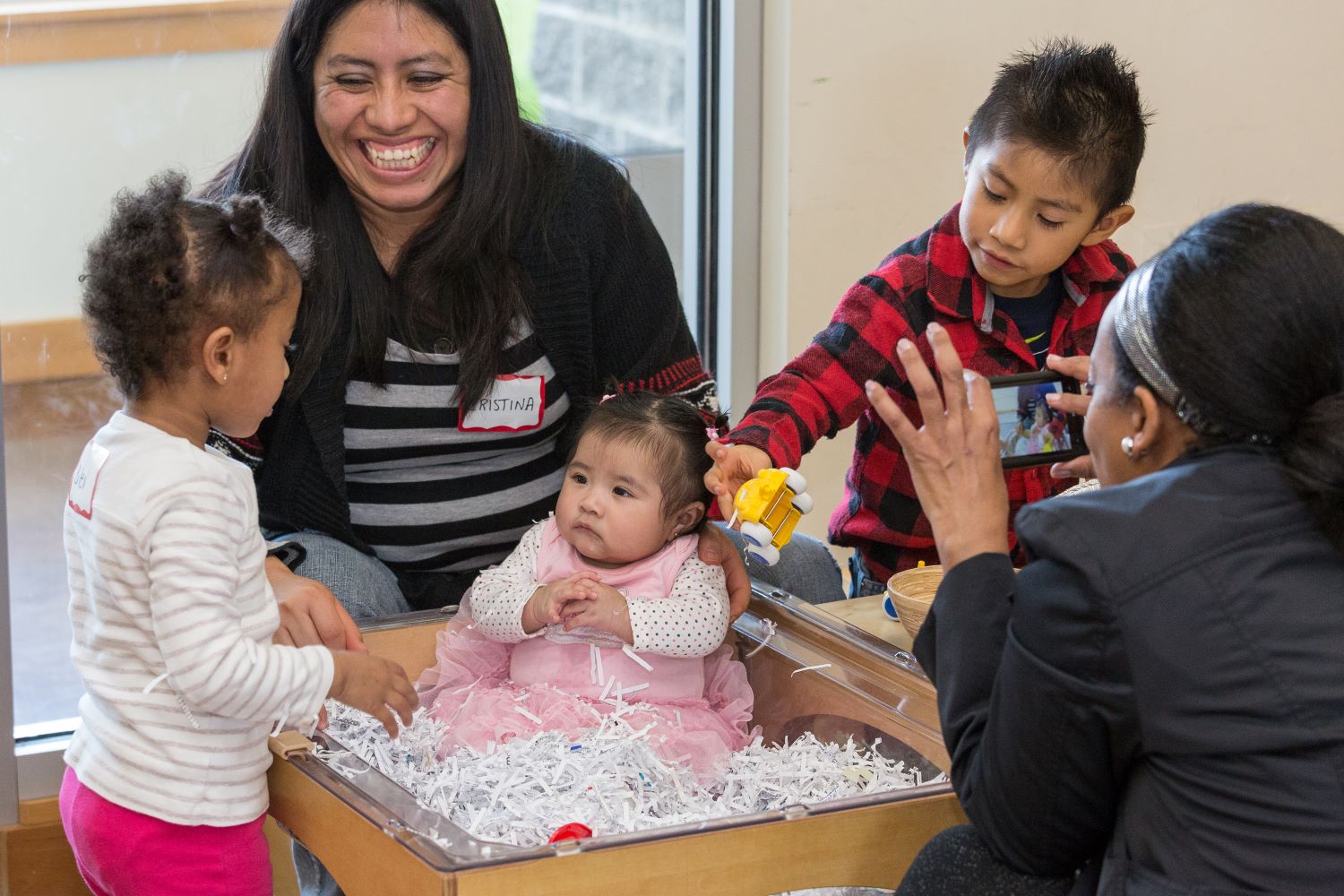 All Head Start and Early Head Start agencies collect data and information on a variety of topics to track quality and efficacy. The HSPPS require each agency to establish program goals for improving the school readiness of participating children from birth to age 5 and to follow steps to achieve these goals. The program goals will determine what tools you use to track child development and parent-child interaction, for example. (See Collecting Data in the Home Visitor’s Online Handbook.)
All Head Start and Early Head Start agencies collect data and information on a variety of topics to track quality and efficacy. The HSPPS require each agency to establish program goals for improving the school readiness of participating children from birth to age 5 and to follow steps to achieve these goals. The program goals will determine what tools you use to track child development and parent-child interaction, for example. (See Collecting Data in the Home Visitor’s Online Handbook.)
Home visitors constantly collect data using assessment tools and observations. Collecting data helps home visitors understand the progress of each child and family and the effectiveness of their work. They collect data on aspects of the home-based model as they are implemented with each family, such as attendance, the content of the visits and socializations, and the families’ demographic and personal characteristics. Home visitors also collect data on the child's growth and development.
To make data useful, home visitors must first determine what questions to answer. To determine how the child is doing developmentally and in health and growth, for example, they may ask: Do I want to know how the family is doing on their goals? What is the quality of the parent-child interaction? What about the quality of my own planning and interaction during a home visit? Are families following through on referrals?
The data being collected must be:
- Relevant – Does the information I collect answer the question I am asking?
- Timely – Is the information collected continuously and kept up to date?
- Accurate – Is the information correct for the desired purpose, clear, and in adequate detail?
- Complete – Do I monitor to assure all the information is there?
Assessment tools must be:
- Valid – Does the tool really measure what it is supposed to measure?
- Reliable – Does it provide dependable and consistent information?
Adapted from What is Quality Data for Programs Serving Infants and Toddlers?
Supervisors and home visitors may look at data on the following topics.
Attendance
- How many visits and socializations were there?
- Regularly attended?
- Cancelled?
- No-showed?
- How long was each visit and socialization?
Family Engagement
- Were the visits and socializations focused and constructive?
- Were the parents engaged?
- Did parents ask questions about topics you have discussed?
- What information and concerns were covered?
- Were they drawn from joint planning?
- How did conversations address parenting strategies and concerns?
- What were the family service agreement outcomes?
- What were the home safety outcomes and environmental modifications?
- Were issues raised because of situations such as family disruption, violence, mental health, food or housing instability, financial stress, teen or single parenting, etc.?
- Did these issues interfere with spending time on child development experiences?
School Readiness
- How did experiences address the child's school readiness goals related to the Head Start Early Learning Outcomes Framework (ELOF)?
- How did learning experiences incorporate materials in the home?
- What assessment methods were used and what was recorded?
- What plan was created for the next home visit or socialization?
- What observations did parents make about learning?
Comprehensive Services
- What is the child's health status?
- How many well-child visits were kept?
- Were there unique family concerns?
- How many and what referrals were made?
- Which community resources were provided? Which community resources are needed?
- What nutrition was shared?
- What is the child’s oral health status?
Supervisors and home visitors can analyze data to determine if established program, family, and child goals are being met. This analysis also helps determine if adjustments are needed to the goals or to the approaches being used to meet them.
Learn More
Measuring What Matters: Using Data to Support Family Progress
Learn how using data more effectively can strengthen your work with children and families. Explore how to assess services and measure progress on family and child outcomes using data. This series focuses on tracking program progress as you set goals and implement plans within a 5-year project period. Measuring What Matters is aligned with the Parent, Family, and Community Engagement (PFCE) Framework and the HSPPS.
What Is Quality Data for Programs Serving Infants and Toddlers?
Explore this resource to learn more about various data management strategies within the context of Head Start programs. Find out what quality data is and why it is important. Also, learn what makes data valid and reliable.
Read more:
Resource Type: Article
National Centers: Early Childhood Development, Teaching and Learning
Last Updated: February 19, 2021